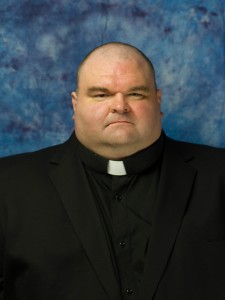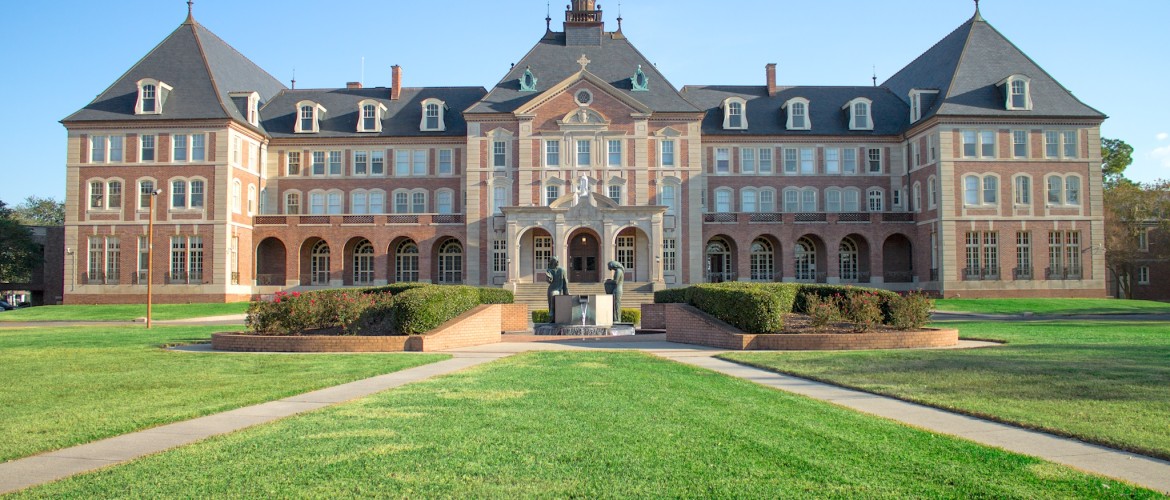By: Father Mark Raphael, Ph.D., Professor of Historical Theology
John William Shaw, who served as Archbishop of New Orleans from 1918 until his death in 1934, was ordained a priest on 26 May 1888, in the Basilica of St. John Lateran in Rome. Though a native of Mobile, Alabama, he had been sent to Europe for his priestly formation: six years of minor seminary in Ireland, and six years of major seminary in Rome.
Shaw’s first assignment as a priest was to St. Peter’s in Montgomery, Alabama. In February of 1889 he met his new pastor, Father Denis Savage, for the fist time. Father Savage found himself looking at a clean-shaven, six foot tall, twenty-six year old priest, whose close-cut sand-colored hair was prematurely graying. Shaw was alarmingly thin, which combined with his height and paleness to exude the impression that he was about to collapse. He looked out at the world from behind round, wire-rimmed eye-glasses, with a gaze that was fixed and intense. His manners were impeccable but reserved. He spoke slowly and distinctly, with only a slight trace of the southern accent that was his heritage. He did not fidget as young men often do, especially when nervous. Shaw stood or sat with a stillness that fostered an aura of complete focus on the person or task before him.
On the whole, Shaw’s demeanor conveyed the impression that he was older than his actual age. He was scholarly, austere, and dedicated, but looked sickly and fragile. Father Savage gasped with astonishment that the bishop imagined that such a frail boy could handle the rigors of rural parish life. Shaw was crushed at such a welcome, but maintained his dignity and calmly assured his new pastor that he would not fail to perform every single duty required.
Father Savage decided to put Shaw’s claim to the test. The following week he presented Shaw with a map and told him to go to Eufaula, and investigate how many people would be willing to offer money to support regular priestly visits. Grimly determined, Shaw set out with his horse Peanut on his priestly adventure. He had as much to prove to himself as to his pastor.
Leaving Montgomery, Shaw and Peanut followed the southern bank of the Alabama River heading northeast until they reached its confluence with the Tallapoosa River, and then turned east to follow the southern bank of that river. It was their misfortune that a massive spring storm erupted all around them, causing the Tallapoosa to swell over its banks. Shaw had spent his childhood playing on the banks of rivers and Mobile Bay, so this did not frighten him; he and Peanut simply changed course south to avoid the problems. The necessary adjustment lengthened the journey, which Shaw realized when they reached the Chattahoochee River too far south. He and Peanut then turned north, keeping the Chattahoochee on their right, which formed the southern portion of the Alabama-Georgia border, until they came to the estuary that is today Lake Eufaula.
Meanwhile, back in Montgomery, Father Savage was feeling guilty that he had sent the skeletal boy out in the storm season, and worried that he would have to tell the bishop that he had caused the death of a newly ordained priest. And so, Father Savage was relieved when informed that his new priest had returned to town. Waiting with escalating impatience for Shaw to appear, Father Savage finally went to the barn where he was told Shaw had gone. There he found the bony, travel stained Shaw gently brushing and tending to Peanut. When his pastor appeared, Shaw wordlessly opened a saddlebag and presented a list of ninety Catholic families around Eufaula and the banks of the Chattahoochee River who were willing to pay a subscription to support a monthly visit by a priest.
It would be an overstatement to claim that the two became close friends, but after Shaw fulfilled his first duty in his first assignment, the pastor never again questioned Shaw’s commitment or resolve. That was the beginning of the rest of Shaw’s priestly life.
About the Author: Father Mark Raphael, Ph.D., Professor of Historical Theology

Degree information:
BA, History, University of New Orleans (1990)
MA, History, University of New Orleans (1992)
M.Div. Notre Dame Seminary (1998)
Ph.D., Historical Theology/Church History, The Catholic University of America (2009)
Assignments:
Ordained a priest for the Archdiocese of New Orleans (1998)
Parochial Vicar, St. Catherine of Siena (1998-2001)
Parochial Vicar, Our Lady of Prompt Succor (2001-2003)
Pastor, St. Robert Bellarmine Parish (2003-2005)
Administrator, St. John the Baptist Parish (2005)
Doctoral Studies (2006-2008)
Professor of Historical Theology, Notre Dame Seminary (2008-current)
Director, Continuing Formation of Priests, Archdiocese of New Orleans (2011-current)
Publications:
History of Notre Dame Seminary (1997)
Narrative History of the Catholic Church (2000)
History of St. Robert Bellarmine Parish, 1965-2005 (2005)
“Americanism as Seen through the Cincinnati Catholic Telegraph” U.S. Catholic Historian (2007)
Doctoral Dissertation: “John William Shaw: First American-born Archbishop of New Orleans, 1918-1934,” (2009)
Contact
Email: mraphael@nds.edu
Disclaimer
All opinions published by the authors on this blog are solely those of the authors. Although the goal is that they should, they do not necessarily express the views and opinions of the Archdiocese of New Orleans, Notre Dame Seminary, the Church, or their respective dioceses and bishops.
Notre Dame Seminary and the Archdiocese of New Orleans are not responsible for the comments of commenters, although every effort will be made to remove offensive comments.
If you should find an error or offensive content, please email the NDS Blog editorial team.

